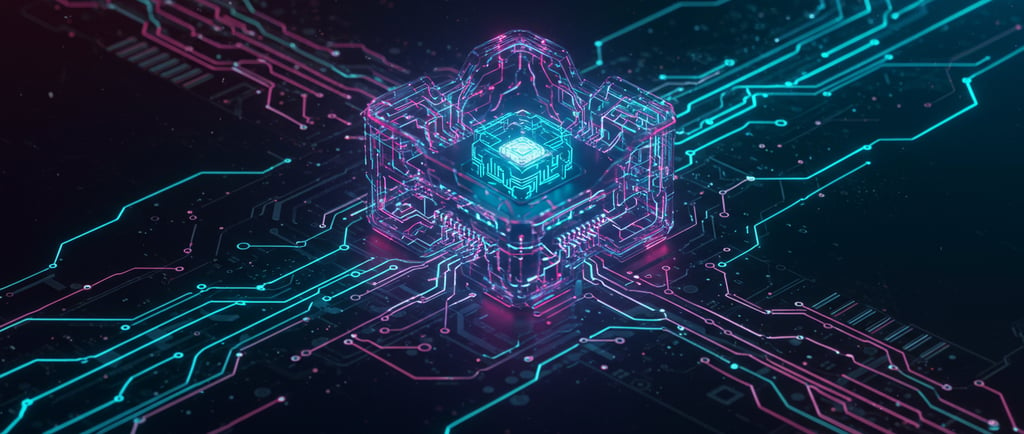Unlocking Innovation with Generative AI
Explore how generative AI operates and the critical role data plays in its functionality. Learn how businesses can leverage generative AI to drive innovation and achieve scalable growth.
TOOLS & RESSOURCES
6/7/20254 min read


For decades, artificial intelligence has helped us analyze the world around us—sorting data, spotting patterns, and making predictions. However, in the past few years, AI has taken a significant leap in creativity. Enter Generative AI (Gen AI): a groundbreaking class of technology with the power not just to analyze the world, but to create new content from it.
From writing and design to research and reasoning, Gen AI is redefining what machines can do—and how we partner with them. But as powerful as Gen AI is, its effectiveness relies on one core ingredient: data.
What makes Gen AI so transformative, how it differs from traditional AI, and why your data infrastructure is more important than ever.
🔍 What Is Generative AI?
While traditional AI and machine learning (ML) focus on analytics, such as sorting emails or predicting customer churn, Gen AI takes it further by creating entirely new content. That includes text, images, video, code, and even music.
At the heart of Gen AI are neural networks trained on massive datasets. These models identify deep patterns and structures in the data, allowing them to generate responses that feel coherent, original, and often astonishingly human.
Some examples you already know? ChatGPT, Midjourney, and DALL·E. All powered by Gen AI.
🧠 A Brief History: From Rule-Based AI to Creative Machines
The roots of AI go back to the 1950s with rule-based systems and early logic engines. Machine learning, which became popular in the 1980s, introduced algorithms that could learn from data rather than rely on pre-written rules.
By the early 2000s, deep learning revolutionized the field. With multiple neural layers mimicking the brain, AI began outperforming humans in complex tasks like image recognition, speech transcription, and natural language processing.
Then came a major leap in 2017: the transformer architecture. Developed by Google Brain, transformers enabled AI to handle long-form context, powering models like GPT (Generative Pretrained Transformers), which soon led to ChatGPT.
📚 Enter: Large Language Models (LLMs)
LLMs like ChatGPT are Gen AI systems trained on petabytes of text data, including books, websites, research papers, and articles. They can understand context, nuance, and tone, then generate responses in natural, conversational language.
Today’s LLMs are used across industries:
Marketing: First drafts of blogs, captions, and product descriptions
Customer Service: Intelligent chatbots with real-time answers
Legal/Finance: Contract summarization and document analysis
Science & Healthcare: Literature reviews and research interpretation
And the most advanced LLMs? They’re multimodal, capable of handling not just language but also images, audio, and video.
⚙️ Why GPUs Matter in AI’s Rise
Generative AI requires massive computational power. That’s where GPUs (Graphics Processing Units) come in. Originally built for gaming graphics, GPUs can process thousands of operations simultaneously, perfect for training complex Gen AI models.
These parallel processors make it possible to train and deploy models at scale, powering everything from AI-generated art to enterprise chatbots.
🗂 The Real Engine Behind Gen AI: Data
While LLMs trained on public data can impress, they’re only truly valuable in an enterprise when combined with your organization’s private data.
Think
Customer service transcripts
Product descriptions
Transaction logs
Marketing performance data
The catch? About 80–90% of enterprise data is unstructured, hiding in emails, PDFs, audio files, web logs, and social media posts. Unlocking that data is key to unleashing Gen AI’s full potential.
🧩 Building a Strong Data Foundation for Gen AI
To support Gen AI successfully, companies must:
Ingest first-, second-, and third-party data sources
Unify structured, semi-structured, and unstructured data
Ensure robust data governance, security, and access controls
That’s where the cloud data platform comes in.
☁️ Why a Cloud Data Platform Matters
A cloud data platform is more than just storage. It’s a central hub for organizing, governing, and accessing data across teams securely and efficiently.
With the right platform, companies can:
Store large datasets and manage LLM training or fine-tuning
Share AI models and datasets securely across departments
Scale compute resources on demand (especially GPU power)
Ensure consistent governance while still enabling innovation
By housing all AI-related data and models in one ecosystem, enterprises reduce complexity and accelerate Gen AI use cases—without compromising security.
🧠 Gen AI Use Cases in the Enterprise
Generative AI is already transforming key areas:
Content Creation
First drafts of blogs, social media posts, product descriptions, and even personalized marketing images.
Conversational Interfaces
Chatbots and virtual assistants are trained on your internal knowledge base for faster, more accurate support.
Document Summarization
Extract insights from reports, contracts, and articles at scale—turning unstructured documents into structured data.
Language Translation
Accurately translate and localize marketing or support content across markets.
Sentiment & Insight Analysis
Parse customer reviews, survey responses, and social media to detect sentiment and emerging trends.
🔐 Innovation + Security: Striking the Balance
Generative AI is already transforming key areas:
Content Creation
Gen AI is only as powerful as the data it’s trained on—but with great data access comes great responsibility. Enterprise AI systems must:
Protect private customer data
Enforce access controls and audit trails
Support model transparency and explainability
To achieve this, companies should unify data into governed platforms that empower teams without exposing sensitive information. It’s not just about having data—it’s about having clean, trusted, accessible data.
🚀 Final Thought: The Future of Work Is Generative
Gen AI is more than a tech trend. It’s a new way of thinking, working, and building. But to realize its full promise, businesses must invest not just in models, but in the data, people, and platforms that bring them to life.
Your data isn’t just fuel for AI. It’s your competitive edge.


